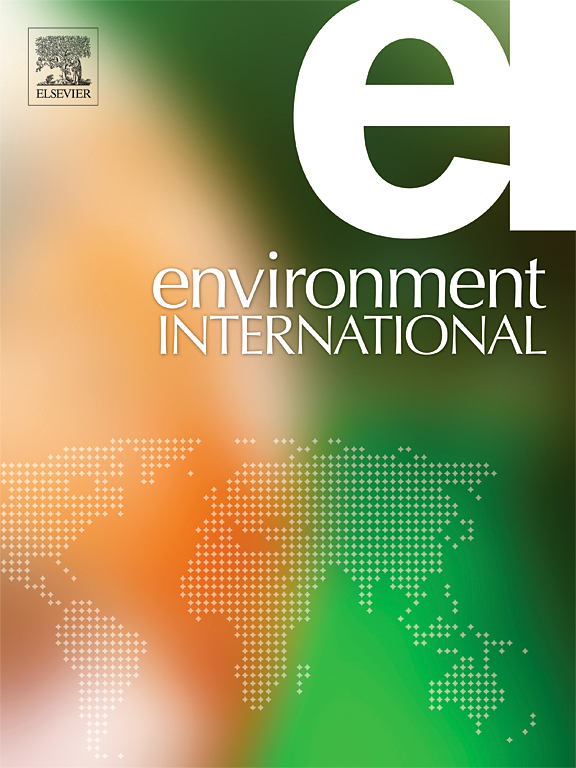从设计到报告人体生物监测(HBM)的最低信息要求(MIR)指南
IF 9.7
1区 环境科学与生态学
Q1 ENVIRONMENTAL SCIENCES
引用次数: 0
摘要
人体生物监测(HBM)提供了一种综合的化学暴露评估,考虑了所有的暴露途径和来源。暴露和影响的生物标志物的准确解释和可比性取决于统一的、有质量保证的采样、处理和分析。目前,缺乏关于收集和报告HBM数据所需的最低信息的广泛接受的指导,阻碍了研究之间的可比性。此外,它还妨碍HBM充分发挥其作为评估和管理人类接触化学品风险的可靠方法的潜力。国际暴露科学学会HBM工作组(ISES Europe HBM工作组)欧洲分会建立了一个全球人类生物监测社区网络(HBM global network),以制定指南来定义HBM中需要收集和报告的最低信息,称为“人类生物监测的最低信息要求(MIR-HBM)”。这项工作建立在以前协调全球HBM的努力的基础上。MIR-HBM指南涵盖了HBM从设计阶段到结果有效沟通的所有阶段。通过仔细定义所有阶段的MIR,研究人员和卫生专业人员可以使他们的HBM研究和项目稳健、可重复且有意义。在一般人群和职业领域接受和实施MIR-HBM指南将提高HBM数据的可解释性和监管效用。尽管实施方面的挑战仍然存在,例如地方能力不同,国家层面的道德和法律差异,但该倡议代表了协调HBM实践的重要一步,并支持决策者、法律专家和科学家之间的持续对话,以有效应对这些挑战。利用HBM的数据和见解,政策制定者可以制定更有效的战略,以保护公众健康并确保更安全的工作环境。本文章由计算机程序翻译,如有差异,请以英文原文为准。
Guidance on minimum information requirements (MIR) from designing to reporting human biomonitoring (HBM)
Human biomonitoring (HBM) provides an integrated chemical exposures assessment considering all routes and sources of exposure. The accurate interpretation and comparability of biomarkers of exposure and effect depend on harmonized, quality-assured sampling, processing, and analysis. Currently, the lack of broadly accepted guidance on minimum information required for collecting and reporting HBM data, hinders comparability between studies. Furthermore, it prevents HBM from reaching its full potential as a reliable approach for assessing and managing the risks of human exposure to chemicals.
The European Chapter of the International Society of Exposure Science HBM Working Group (ISES Europe HBM working group) has established a global human biomonitoring community network (HBM Global Network) to develop a guidance to define the minimum information to be collected and reported in HBM, called the “Minimum Information Requirements for Human Biomonitoring (MIR-HBM)”. This work builds on previous efforts to harmonize HBM worldwide.
The MIR-HBM guidance covers all phases of HBM from the design phase to the effective communication of results. By carefully defining MIR for all phases, researchers and health professionals can make their HBM studies and programs are robust, reproducible, and meaningful. Acceptance and implementation of MIR-HBM Guidelines in both the general population and occupational fields would improve the interpretability and regulatory utility of HBM data. While implementation challenges remain—such as varying local capacities, and ethical and legal differences at the national levels, this initiative represents an important step toward harmonizing HBM practice and supports an ongoing dialogue among policymakers, legal experts, and scientists to effectively address these challenges. Leveraging the data and insights from HBM, policymakers can develop more effective strategies to protect public health and ensure safer working environments.
求助全文
通过发布文献求助,成功后即可免费获取论文全文。
去求助
来源期刊

Environment International
环境科学-环境科学
CiteScore
21.90
自引率
3.40%
发文量
734
审稿时长
2.8 months
期刊介绍:
Environmental Health publishes manuscripts focusing on critical aspects of environmental and occupational medicine, including studies in toxicology and epidemiology, to illuminate the human health implications of exposure to environmental hazards. The journal adopts an open-access model and practices open peer review.
It caters to scientists and practitioners across all environmental science domains, directly or indirectly impacting human health and well-being. With a commitment to enhancing the prevention of environmentally-related health risks, Environmental Health serves as a public health journal for the community and scientists engaged in matters of public health significance concerning the environment.
 求助内容:
求助内容: 应助结果提醒方式:
应助结果提醒方式:


